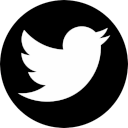Going Green with... Communication
A Comparative Analysis of Opposing Campaigns
DOI:
https://doi.org/10.13136/2281-4582/2022.i20.1113Keywords:
Greenpeace campaigns, Gazprom, greenspeak, promotionalisation, multimodal critical discourse analysis, ecolinguisticsAbstract
In tune with rapidly increasing environmental awareness, terms like sustainability and eco-friendly frequently occur and are exploited in discourse domains from supermarket advertising to corporate communication. In contrast to these discursive simulations of concern, Greenpeace (GP) activists have consistently used peaceful protests as a means to protect our planet. GP’s campaigns are designed to raise questions, to make people rethink the way they live and (ab)use the Earth’s environment, and, ultimately, to engage volunteers and raise funds. In a different vein, Gazprom (GZM) also attempts to advertise its corporate image and its mission to distribute gas through powerful technology, connecting entire continents through a grid of pipelines and ships, ‘energising’ anything from industrial plants to gas stoves in apartments and small cottages. The aim of this study is to analyse aspects of both GZM’s and GP’s modes of advertising their goals, particularly the multi-layered composition of their online videos, using a multimodal Critical Discourse Analysis approach from an ecolinguistic perspective. Both GZM and GP exemplify a tendency to“promotionalisation,” sharing the same codes and rhetoric strategies in a variety of advertising campaigns. Unpredictably enough, both utilise ‘green speaking’ multimodally. The implications of these striking similarities are discussed.
References
Ascher, Steven and Edward Pincus. The Filmmaker’s Handbook: A Comprehensive Guide for the Digital Age. New York: Plume, 2013.
Barthes, Roland. Le Plaisir du Texte. Paris: Seuil, 1973.
---. Mythologies. Paris: Seuil, 1957.
Bateman, John, Janina Wildfeuer and Tuomo Hiippala. Multimodality. Berlin: Walter de Gruyter, 2017.
Bhatia, Vijay Kumar. “Generic Patterns in Promotional Discourse.” Persuasion across Genres: A Linguistic Approach. Edited by Helena Halmari and Tuija Virtanen. Amsterdam: John Benjamins, 2002. 213-225.
---. Worlds of Written Discourse: A Genre-Based View. London: Continuum, 2004.
Catenaccio, Paola. “Press Releases as a Hybrid Genre: Addressing the Informative/Promotional Conundrum.” Pragmatics 18.1 (2008): 9-31.
Cavaliere, Flavia. “Making Science Easier to Access—Investigating Academic Social Networks as ‘Composites of Connotations.’” Multimodal Digital Texts and Practices in Learning Scenarios. Edited by Maria Grazia Sindoni and Ilaria Moschini. New York: Routledge, 2021. 228-244.
Chandler, Daniel. “Camera Techniques: Distance and Angle. The ‘Grammar’ of Television and Film.” Visual Memory, 2016. visual-memory.co.uk/daniel/Documents/short/gramtv.html.
Cox, Robert. Environmental Communication and the Public Sphere. London: Sage, 2012.
Dastenaee, Mahnaz Talebi and Hamideh Poshtvan. “A Critical Review of Ecolinguistic Studies in Iran.” Language & Ecology (2017–2018). https://www.ecolinguistics-association.org/_files/ugd/ae088a_03f30d55592546d79c23bcf26a34d743.pdf.
Dyer, Gillian. Advertising as Communication. London: Routledge, 1988.
Ermolayev, Oleg, et al. “Getting Warm Welcome Home.” Gazprom.com, 2013. www.gazprom.com/press/news/reports/2013/nestling-boxes/.
Fairclough, Norman. Analyzing Discourse and Text: Textual Analysis for Social Research. London: Routledge, 2003.
---. “Critical Discourse Analysis and the Marketization of Public Discourse: The Universities.” Discourse and Society 4.2 (1993):133-168.
---. “Critical Discourse Analysis in Researching Language in the New Capitalism: Overdetermination, Transdisciplinarity and Textual Analysis.” Systemic Functional Linguistics and Critical Discourse Analysis. Edited by Lynne Young and Claire Harrison. London: Continuum, 2004. 103-122.
---. “Critical Discourse Analysis in Transdisciplinary Research.” A New Agenda in (Critical) Discourse Analysis, 13th ed. Edited by Ruth Wodak and Paul Chilton. Amsterdam: John Benjamins, 2005. 53-70.
---. Discourse and Social Change. Cambridge: Polity, 1992.
---. Language and Globalization. London: Routledge, 2006.
---. Language and Power. London: Longman, 2001.
---. Media Discourse. New York: Arnold, 1995.
Foucault, Michel. Power/Knowledge: Selected Interviews and Other Writings. New York: Pantheon, 1980.
---. “Qu’est-ce qu’un auteur?” Bulletin de la Société Française de Philosophie 3 (1969a): 73-104.
---. The Archaeology of Knowledge. Paris: Editions Gallimard, 1969b.
Fowler, Roger. Language in the News: Discourse and Ideology in the Press. London: Routledge, 1991.
Fowler, Roger and Gunther Kress. “Critical Linguistics.” Language and Control. Edited by Roger Fowler, et al. London: Routledge, 1979. 185-213.
Haugen, Einar. The Ecology of Language. Stanford: Stanford University Press, 1972.
Hoang, Thi Van Yen and Isolda Rojas-Lizana. “Promotional Discourse in the Websites of Two Australian Universities: A Discourse Analytic Approach.” Cogent Education 2.1 (2015): 2-19.
International Linguistics Association. “About.” International Linguistics Association, n.d. ecolinguistics-association.org/.
Jarboe, Greg. “Video Trends: 8 Critical Industry Takeaways from NewFronts 2018.” Tubular Insights, 2018. https://staging.tubularinsights.com/newfronts-2018-video-trends/.
Jaworski, Adam and Nikolas Coupland. Discourse Reader, 3rd ed. London: Routledge, 2014.
Kress, Gunther. “Design and Transformation: New Theories of Meaning.” Multiliteracies: Literacy Learning and the Design of Social Futures. Edited by Bill Cope and Mary Kalantzis. London: Routledge, 2000. 153-161.
---. Multimodality. London: Routledge, 2010.
Kress, Gunther and Theo van Leeuwen. Multimodal Discourse: The Modes and Media of Contemporary Communication. Oxford: Oxford University Press, 2001.
---. Reading Images: The Grammar of Visual Design, 3rd ed. London: Routledge, 2021.
Lakoff, George and Mark Johnson. Metaphors We Live By. Chicago: University of Chicago Press, 1980.
Lagerwerf, Luuk, Charlotte M.J. van Hooijdonk and Ayalies Korenberg. “Processing Visual Rhetoric in Advertisements: Interpretations Determined by Verbal Anchoring and Visual Structure.” Journal of Pragmatics 44.13 (2012): 1836-1852.
Lange, Patricia G. Kids on YouTube: Technical Identities and Digital Literacies. Walnut Creek: Left Coast Inc, 2014.
Lieberman, David. “YouTube Pitches Itself to Advertisers as the Medium of the Future.” Deadline 2015. http://deadline.com/2015/04/youtube-advertising-newfront-future-video-1201418305.
Liu, Yu and Kay L. O’Halloran. “Inter-Semiotic Texture: Analyzing Cohesive Devices between Language and Images.” Social Semiotics 19.4 (2009): 367-388.
Mitchell, William J. T. Iconology: Image, Text, Ideology. Chicago: University of Chicago Press, 1986.
---. Image Science: Iconology, Media Aesthetics, and Visual Culture. Chicago: University of Chicago Press, 2015.
---. Picture Theory. Chicago: University of Chicago Press, 1994.
Moore, Patrick, “Why I Left Greenpeace.” Climatecite 2015. https://climatecite.com/why-i-left-greenpeace/.
Novis, John. “The Man who Showed us All the True Threat in the Arctic.” Greenpeace.org 2013. www.greenpeace.org/usa/the-man-who-showed-us-all-the-true-threat-in-the-arctic/.
NPR. “Transcript: Greta Thunberg's Speech at the U.N. Climate Action Summit.” NPR 2019. www.npr.org/2019/09/23/763452863/transcript-greta-thunbergs-speech-at-the-u-n-climate-action-summit?t=1581768554749.
Page, Ruth. “Introduction.” New Perspectives on Narrative and Multimodality. Edited by Ruth Page. London and New York: Routledge, 2010. 1-13.
Stibbe, Arran. “An Ecolinguistic Approach to Critical Discourse Studies.” Critical Discourse Studies 11.1 (2014): 117-128.
---. Ecolinguistics: Language, Ecology and the Stories We Live By. London: Routledge, 2015.
---. “Ecolinguistics: Language, Ecology and the Stories We Live By.” Unpublished informal companion to Ecolinguistics: Language, Ecology and the Stories We Live By. n.d. www.academia.edu/10214948/Ecolinguistics_Language_Ecology_and_the_Stories_We_Live_By.
---. “Ecolinguistics: The Search for New Stories to Live By.” Paper presented at a seminar in Catania (Italy), 7 September 2016. http://www.cadaad2016.unict.it/
Stinson, Jim. “All About Camera Angles.” The Videomaker. 2012, www.videomaker.com/article/f5/9128-all-about-camera-angles.
Van Dijk, Teun A., edited by. Discourse as Social Interaction, Vol. 2. London: Sage, 1997.
Van Leeuwen, Theo. “Colour Schemes.” Multimodality and Social Semiosis: Communication, Meaning-Making, and Learning in the Work of Gunther Kress. Edited by Margit Böck and Norbert Pachler. London and New York: Routledge, 2013. 62-71.
---. Introducing Social Semiotics. London: Routledge, 2008.
Wang Yilei and Dezheng (William) Feng. “History, Modernity, and City Branding in China: A Multimodal Critical Discourse Analysis of Xi’an’s Promotional Videos on Social Media.” Social Semiotics (2021). doi:10.1080/10350330.2020.1870405.
Wodak, Ruth. “Critical Discourse Analysis, Discourse-Historical Approach.” The International Encyclopedia of Language and Social Interaction. Edited by Karen Tracy, Cornelia Ilie and Todd Sandel. Chichester: John Wiley & Sons, 2015. 1-14.
---. The Discourse of Politics in Action: Politics as Usual, 2nd ed. London: Palgrave Macmillan, 2011.
Yao, Yinyan and Zhuo, Yanfen. “A Multimodal Discourse Analysis of the Promotional Video of Hangzhou.” English Language Teaching 11.10 (2018): 121-131.
Downloads
Published
Issue
Section
License
Copyright (c) 2022 Lucia Abbamonte, Flavia Cavaliere

This work is licensed under a Creative Commons Attribution-NonCommercial 4.0 International License.
Iperstoria is an Open Access journal.- Authors retain copyright and grant the journal right of first publication with the work simultaneously licensed under a Creative Commons Attribution 4.0 BY-NC License that allows others to share the work with an acknowledgement of the work's authorship and initial publication in this journal.
- Authors are able to enter into separate, additional contractual arrangements for the non-exclusive distribution of the journal's published version of their work (e.g., post it to an institutional repository or publish it in a book), with an acknowledgement of its initial publication in this journal. We require authors to inform us of any instances of re-publication.







